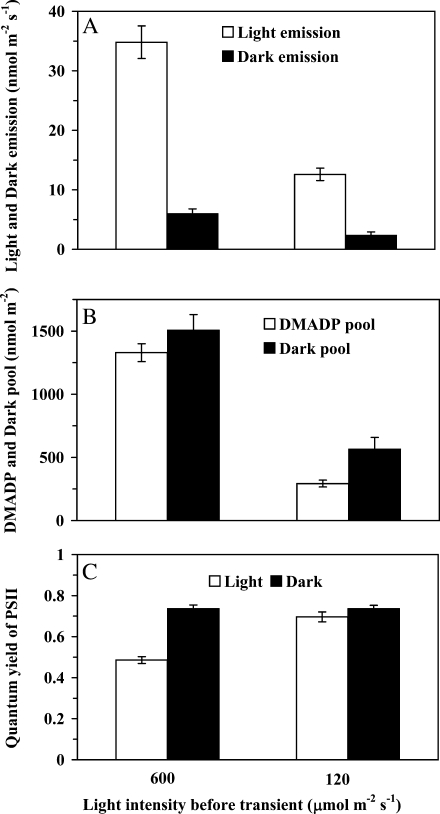Figure 2.
Influence of quantum flux density on the rates of steady-state isoprene emission in light and on the maximum dark-induced isoprene emission (A), DMADP pool size and dark pool size corresponding to these rates (B), and the light-adapted [(Fm′ − F)/Fm′] and dark-adapted [(Fm − F0)/Fm] quantum yields of PSII (C). The dark-induced emission is defined as the process induced after the fast dark transient of isoprene emission has relaxed, at approximately 300 to 400 s after switching off the light (for sample relationships, see Fig. 1). The DMADP pool is obtained by integrating the isoprene emission rate following the fast transient after switching off the light (up to approximately 200–300 after darkening), while the dark pool is obtained by integrating the emission transient activated in darkness (between approximately 300 and 1,500 s after switching off the light; Fig. 1). In these experiments, ambient CO2 concentration was 360 μmol mol−1, oxygen concentration was 21%, and leaf temperature was kept at 33°C. The data are averages ± sd of four independent experiments.

